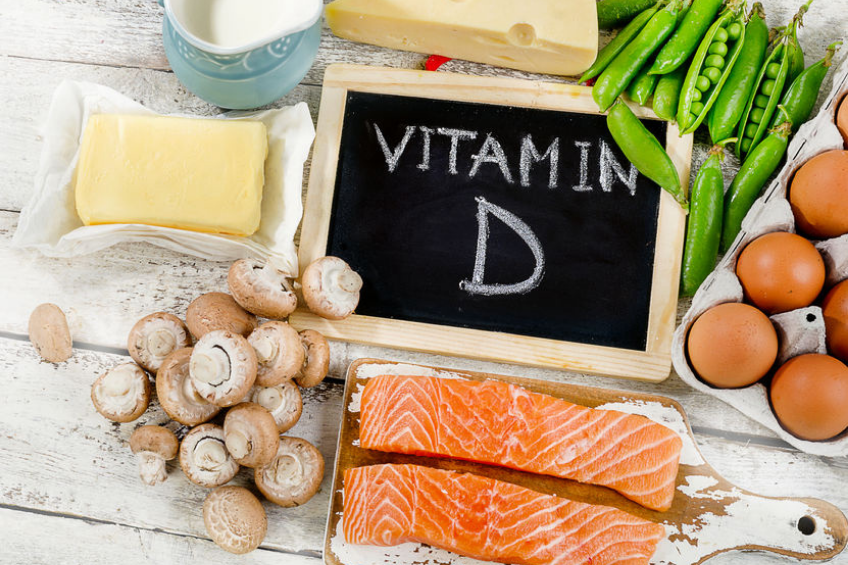Diet and Nutrition for Scoliosis
Scoliosis is a complex condition that requires a multidisciplinary approach in order to obtain the most optimal outcome, which is avoiding surgery, preventing or reducing pain, and preventing progression of the curve(s), and improvement of body alignment. It is quite common to hear that an individual with scoliosis will see a physician for the monitoring and overall care of their spine, an orthotist for bracing and a physical therapist for movement treatment. Many parents I meet have put quite a bit of time and effort into learning about and understanding the condition and treatment options. After finding the best physician who will take a conservative approach to treatment, an orthotist that provides a Rigo-Chêneau brace that truly follows the principles that Dr. Rigo teaches, and a physical therapist that is experienced and certified in the Schroth Method, one would think they have covered all bases. There is one more thing to consider, diet and nutrition. It is less common to hear about the diet of the person as part of their treatment plan. As you read this blog, my intention is to create awareness of the importance of proper nutrition and how it relates to scoliosis. If your providers have not discussed this with you, it is important to ask at your next visit.

We know that scoliosis is a life-long condition that is crucial to control while you are growing to prevent surgery and pain later in life. If you think of scoliosis as a structure like a slinky or Jenga, it is easy to understand why balance and alignment are the priority. If one block is unbalanced, rotated, or twisted, the entire structure is affected. Thinking in these terms makes it easier to understand why we want to ensure that these blocks or vertebrae are strong, aligned and balanced so that the spine can remain stable over a long period of time.
Bone mass is important to help prevent osteoporosis as an adult. Calcium and Vitamin D play essential roles in helping the body to build bone mass. Calcium builds bone mass when the appropriate amount is consumed consistently in the diet or with the use of supplements. Vitamin D aids the body in absorbing calcium and helps with both metabolic and neurological functions. The Texas Children’s Hospital recommends adolescents consume between 1200 and 1500 mg of calcium every day to minimize the risk of bone loss. Since the 1980’s sun exposure was demonized and as a result our society has become driven to stay inside to protect ourselves. Certainly, understanding the risks of excessive UV ray exposure and how it relates to cancer is certainly important to prevent. However, sun exposure is one of the best ways to get our dose of vitamin D. This article is not suggesting UVB rays are the only way to obtain vitamin D. As you read on, you will find through diet and supplements, the ability to get exactly the amount of this vitamin safely. The benefits of vitamin D are plentiful and important to the health of our bodies. Vitamin D helps promote angiogenesis and helps to mitigate the body’s inflammatory response. Angiogenesis can be described as the formation of new blood vessels from pre-existing ones. This process helps calcium that is available in the stomach to be transported to the bones and help to strengthen them. There is not yet a standard vitamin D dosage that is agreed upon by the experts because there are so many factors that can cause deficiencies. It is important that factors such as medical history, lifestyle, geographical location, and body composition all be considered when a dosage is prescribed. It is imperative that a physician or registered dietitian prescribe the correct dosage because some diseases limit the amount of vitamin D supplementation.

A 25(OH)D or calcidiol test is needed to most accurately evaluate the status of Vitamin D in the individual, however, it is not always necessary in order for your physician to prescribe the appropriate amount of supplementation when all factors of the individual are considered.
Some of the reasons that individuals experience Vitamin D deficiency:
- Constant use of sunscreen when in an outdoor environment. Even using SPF 15 blocks 99% of UVB rays which make vitamin D in the skin.
- Dress. Some cultures cover almost all the skin, blocking UVB rays.
- Diet. Foods high in Vitamin D include fortified milk, fortified cereal, and fatty fish
- Living 40 degrees north of the equator. This includes Pennsylvania, New Jersey, and New York. This geographical region has less opportunity for UVB exposure. The 40-degree line above the equator defines the state borders of Nebraska and Kansas.
- Supplements. Limited use of supplements that include the appropriate amount of vitamin D. Typically a multivitamin does not contain enough vitamin D to be considered optimal, especially if some of the other factors listed are present.
- Darker skin. Those with darker complexions (i.e. from Africa, East India, and Caribbean, etc.) can require 6 times the amount of sun exposure to form the same amount of vitamin D as those with lighter skin.
- Disorders. Disorders that cause malabsorption of vitamins such as cystic fibrosis, Crohn’s disease, celiac disease, etc.
- Medications: Some medications require limited sun exposure because they cause photosensitivity. Examples are tetracyclines which are used to treat infections such as pneumonia and respiratory infections and amiodarone used to treat irregular heartbeat.
There can be additional symptoms related to scoliosis. Most people think of scoliosis as a condition that affects only the bones of the spine and musculature surrounding these structures. Scoliosis can also be accompanied with digestive problems such as pain, Irritable Bowel Syndrome (IBS), acid reflux, constipation, and heartburn. The use of digestive aids can be helpful in minimizing these issues. Some enzyme formulas such as Metagest or Metaxyme have been found to help. EPA-DHA Complex is a probiotic that promotes healthy bacteria in the intestine. As always, it is important to consult your physician before taking supplement or digestive aid.

Anecdotal evidence has shown that the use of a Wood Chêneau Rigo brace as well as Schroth Therapy have helped to reduce and/or resolve some symptoms of digestive issues, acid reflux and heartburn. This is primarily because the brace does not squeeze the body but translates and shifts it. The brace does not use force to correct the spine, it allows the body to adapt to the corrective position over time. For this reason, the WCR brace is not painful to wear and does not feel like it is squeezing the body. Schroth therapy uses exercises to strengthen weak muscles and lengthen shortened muscles while breathing into the concavities of the curve. This therapy is not painful for the person and focuses on correction of the pelvis, ribs, and shoulder alignment. The WCR brace allows the person to breathe into the concavities naturally using the Schroth therapy techniques to continuously work toward improved alignment with every breath.
In conclusion, at Scoliosis Therapy Centers, we are focused on comprehensive and multidisciplinary treatment, providing you with continuous knowledge to obtain the best care possible. Understanding that there are a lot of variables to consider, we feel strongly that we can guide you through what can seem to be a daunting task to get the results you deserve. We want you to feel comfortable reaching out with questions and feel confident that we are doing our part in continuously learning and improving the services we provide. We are available to help you navigate through all the different disciplines to find the providers that can help create your multidisciplinary team, many of which we already work with closely.


